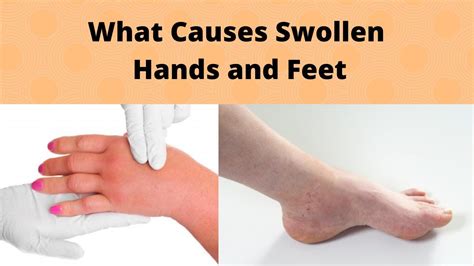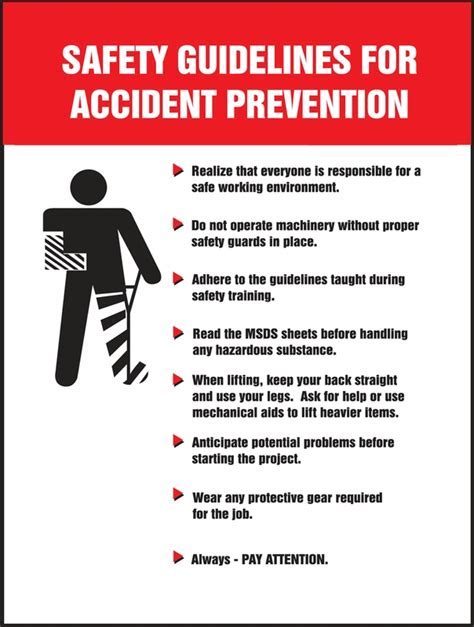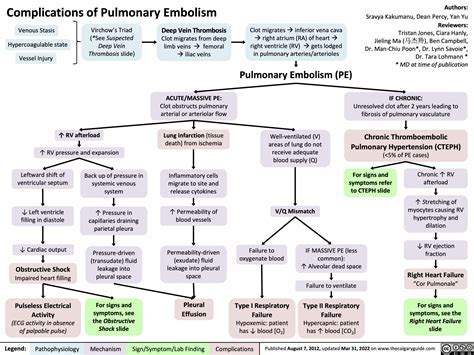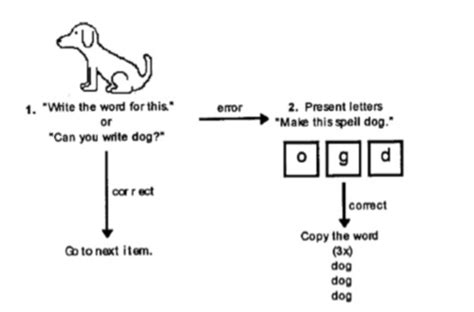Intro
Puffy hands and feet can be a concerning and uncomfortable symptom for many individuals. This condition, also known as edema, occurs when excess fluid becomes trapped in the tissues of the hands and feet, leading to swelling. Edema can be caused by a variety of factors, including medical conditions, lifestyle choices, and environmental factors. In some cases, puffy hands and feet can be a sign of an underlying health issue that requires medical attention. Therefore, it is essential to understand the causes, symptoms, and treatment options available for puffy hands and feet.
Puffy hands and feet can affect anyone, regardless of age or health status. However, certain individuals are more prone to experiencing edema, such as those who are pregnant, overweight, or have a family history of the condition. Additionally, people who engage in activities that involve standing or walking for long periods, such as athletes or individuals with jobs that require prolonged standing, may be more likely to experience puffy hands and feet. Understanding the risk factors and causes of edema can help individuals take preventive measures to reduce their likelihood of developing puffy hands and feet.
Edema can be a temporary or chronic condition, depending on the underlying cause. In some cases, puffy hands and feet may be a symptom of an underlying medical condition, such as heart failure, kidney disease, or liver disease. In other cases, edema may be caused by lifestyle factors, such as a high-sodium diet, lack of exercise, or poor circulation. Regardless of the cause, puffy hands and feet can be uncomfortable and affect an individual's quality of life. Therefore, it is crucial to seek medical attention if symptoms persist or worsen over time.
Causes of Puffy Hands and Feet

Puffy hands and feet can be caused by a variety of factors, including medical conditions, lifestyle choices, and environmental factors. Some common causes of edema include:
- Medical conditions, such as heart failure, kidney disease, or liver disease
- Lifestyle factors, such as a high-sodium diet, lack of exercise, or poor circulation
- Pregnancy or menstruation
- Certain medications, such as steroids or blood pressure medications
- Injuries or trauma to the hands or feet
- Infections, such as cellulitis or abscesses
- Allergic reactions or sensitivities Understanding the underlying cause of puffy hands and feet is essential to developing an effective treatment plan.
Symptoms of Puffy Hands and Feet
The symptoms of puffy hands and feet can vary depending on the underlying cause and severity of the condition. Common symptoms include: * Swelling or puffiness in the hands and feet * Redness or inflammation * Warmth or tenderness to the touch * Pain or discomfort * Limited mobility or flexibility * Tingling or numbness * Skin discoloration or texture changes In some cases, puffy hands and feet may be accompanied by other symptoms, such as fatigue, shortness of breath, or chest pain. If you experience any of these symptoms, it is essential to seek medical attention promptly.Treatment Options for Puffy Hands and Feet

The treatment options for puffy hands and feet depend on the underlying cause and severity of the condition. Some common treatment options include:
- Elevation: Elevating the hands and feet above the level of the heart can help reduce swelling.
- Compression: Wearing compression socks or sleeves can help improve circulation and reduce swelling.
- Medications: Diuretics, such as furosemide, can help reduce fluid retention and alleviate symptoms.
- Lifestyle modifications: Making changes to diet, exercise, and lifestyle habits can help reduce symptoms and prevent future episodes.
- Alternative therapies: Massage, acupuncture, and other alternative therapies may help alleviate symptoms and improve overall well-being. In some cases, puffy hands and feet may require medical attention, such as in the case of an underlying medical condition or severe symptoms.
Home Remedies for Puffy Hands and Feet
There are several home remedies that can help alleviate symptoms of puffy hands and feet. Some of these remedies include: * Soaking the hands and feet in cold water or applying cold compresses * Elevating the hands and feet above the level of the heart * Massaging the hands and feet to improve circulation * Avoiding salty or processed foods * Drinking plenty of water to stay hydrated * Avoiding standing or walking for long periods * Wearing comfortable, supportive shoes These remedies can help reduce swelling and alleviate discomfort, but it is essential to consult with a healthcare professional if symptoms persist or worsen over time.Prevention of Puffy Hands and Feet

Preventing puffy hands and feet requires a combination of lifestyle modifications and self-care practices. Some ways to prevent edema include:
- Maintaining a healthy weight
- Engaging in regular exercise, such as walking or swimming
- Eating a balanced diet that is low in salt and processed foods
- Staying hydrated by drinking plenty of water
- Avoiding standing or walking for long periods
- Wearing comfortable, supportive shoes
- Elevating the hands and feet above the level of the heart
- Managing stress and anxiety through relaxation techniques, such as meditation or deep breathing By incorporating these preventive measures into daily life, individuals can reduce their risk of developing puffy hands and feet.
Risk Factors for Puffy Hands and Feet
Certain individuals are more prone to developing puffy hands and feet due to various risk factors. Some of these risk factors include: * Age: Older adults are more likely to experience edema due to decreased circulation and mobility. * Pregnancy: Pregnant women are at a higher risk of developing edema due to hormonal changes and increased fluid retention. * Obesity: Individuals who are overweight or obese are more likely to experience edema due to increased pressure on the veins and decreased circulation. * Family history: Individuals with a family history of edema are more likely to develop the condition. * Medical conditions: Certain medical conditions, such as heart failure, kidney disease, or liver disease, can increase the risk of developing edema. * Medications: Certain medications, such as steroids or blood pressure medications, can increase the risk of developing edema. Understanding these risk factors can help individuals take preventive measures to reduce their likelihood of developing puffy hands and feet.Complications of Puffy Hands and Feet

If left untreated, puffy hands and feet can lead to various complications, including:
- Skin ulcers or wounds
- Infections, such as cellulitis or abscesses
- Scarring or skin discoloration
- Limited mobility or flexibility
- Chronic pain or discomfort
- Underlying medical conditions, such as heart failure or kidney disease, can worsen if left untreated. It is essential to seek medical attention if symptoms persist or worsen over time to prevent these complications.
Diagnosis of Puffy Hands and Feet
Diagnosing puffy hands and feet typically involves a physical examination and medical history. A healthcare professional may: * Perform a physical examination to assess the severity of swelling and check for any signs of infection or underlying medical conditions. * Review medical history to identify any underlying conditions or risk factors. * Order laboratory tests, such as blood work or urinalysis, to rule out underlying medical conditions. * Conduct imaging studies, such as X-rays or ultrasound, to assess the severity of swelling and check for any signs of underlying medical conditions. A proper diagnosis is essential to developing an effective treatment plan and preventing complications.Treatment of Underlying Medical Conditions

If puffy hands and feet are caused by an underlying medical condition, treatment will focus on managing the underlying condition. Some common underlying medical conditions that can cause edema include:
- Heart failure: Treatment may involve medications, such as diuretics or beta blockers, and lifestyle modifications, such as reducing sodium intake and increasing exercise.
- Kidney disease: Treatment may involve medications, such as diuretics or blood pressure medications, and lifestyle modifications, such as reducing protein intake and increasing exercise.
- Liver disease: Treatment may involve medications, such as diuretics or beta blockers, and lifestyle modifications, such as reducing alcohol intake and increasing exercise.
- Pregnancy: Treatment may involve lifestyle modifications, such as elevating the hands and feet, and medications, such as diuretics. Treating the underlying medical condition is essential to alleviating symptoms of puffy hands and feet.
Self-Care Practices for Puffy Hands and Feet
In addition to medical treatment, self-care practices can help alleviate symptoms of puffy hands and feet. Some self-care practices include: * Elevating the hands and feet above the level of the heart * Applying cold compresses or soaking the hands and feet in cold water * Massaging the hands and feet to improve circulation * Avoiding salty or processed foods * Drinking plenty of water to stay hydrated * Avoiding standing or walking for long periods * Wearing comfortable, supportive shoes These self-care practices can help reduce swelling and alleviate discomfort, but it is essential to consult with a healthcare professional if symptoms persist or worsen over time.Conclusion and Future Directions

In conclusion, puffy hands and feet can be a concerning and uncomfortable symptom for many individuals. Understanding the causes, symptoms, and treatment options available for puffy hands and feet is essential to developing an effective treatment plan and preventing complications. By incorporating lifestyle modifications, self-care practices, and medical treatment, individuals can reduce their risk of developing puffy hands and feet and alleviate symptoms. Future research should focus on developing new treatment options and improving our understanding of the underlying causes of edema.
What are the common causes of puffy hands and feet?
+Puffy hands and feet can be caused by a variety of factors, including medical conditions, lifestyle choices, and environmental factors. Some common causes include heart failure, kidney disease, liver disease, pregnancy, and certain medications.
How can I prevent puffy hands and feet?
+Preventing puffy hands and feet requires a combination of lifestyle modifications and self-care practices. Some ways to prevent edema include maintaining a healthy weight, engaging in regular exercise, eating a balanced diet, staying hydrated, and avoiding standing or walking for long periods.
What are the treatment options for puffy hands and feet?
+The treatment options for puffy hands and feet depend on the underlying cause and severity of the condition. Some common treatment options include elevation, compression, medications, lifestyle modifications, and alternative therapies.
Can puffy hands and feet be a sign of an underlying medical condition?
+Yes, puffy hands and feet can be a sign of an underlying medical condition, such as heart failure, kidney disease, or liver disease. If you experience persistent or worsening symptoms, it is essential to seek medical attention to rule out any underlying medical conditions.
How can I alleviate symptoms of puffy hands and feet at home?
+There are several home remedies that can help alleviate symptoms of puffy hands and feet, including elevating the hands and feet, applying cold compresses, massaging the hands and feet, and avoiding salty or processed foods.
We hope this article has provided you with a comprehensive understanding of puffy hands and feet, including the causes, symptoms, treatment options, and prevention strategies. If you have any further questions or concerns, please do not hesitate to comment below. Share this article with your friends and family to help raise awareness about the importance of foot health. Take the first step towards alleviating symptoms of puffy hands and feet by incorporating lifestyle modifications and self-care practices into your daily routine.
